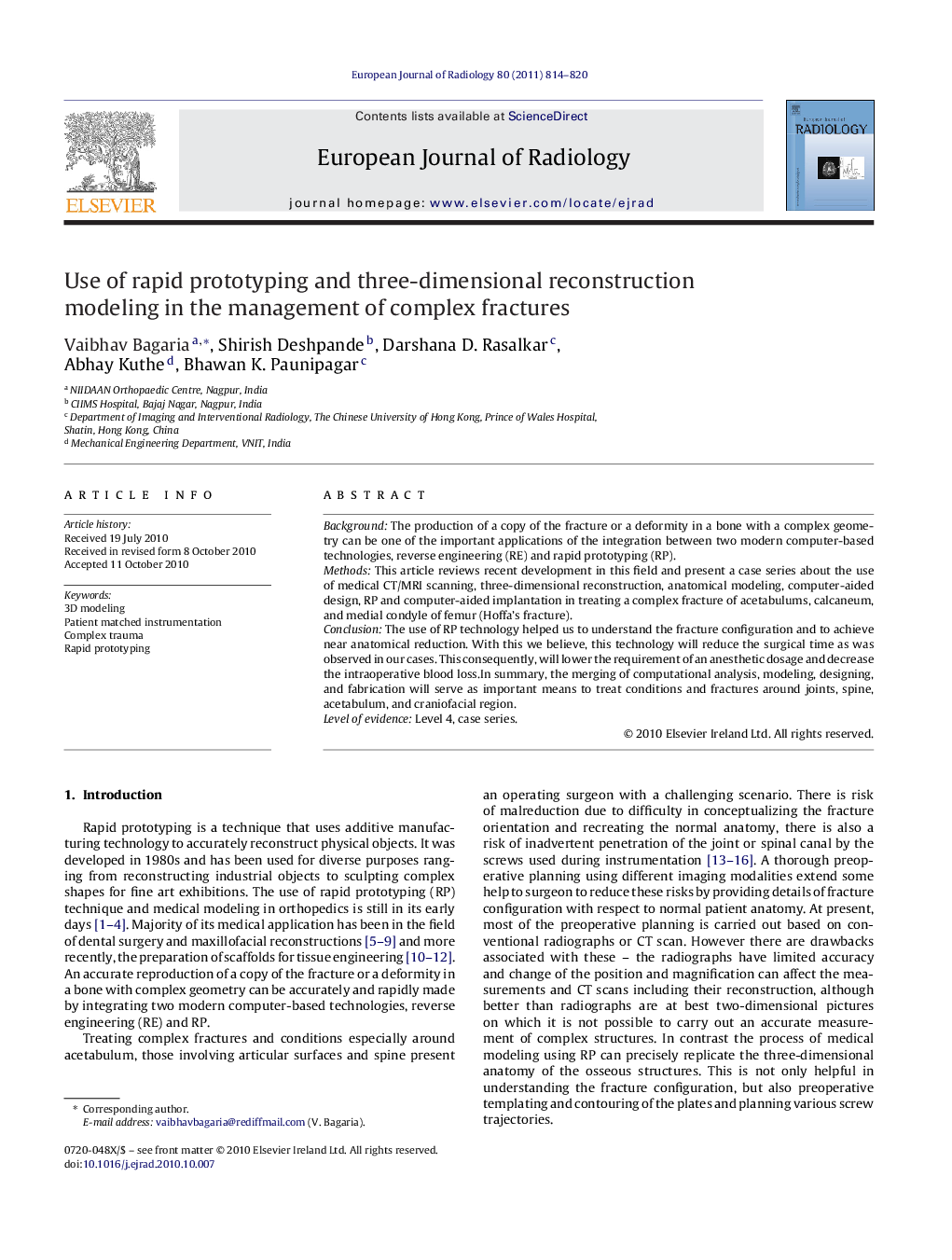| Article ID | Journal | Published Year | Pages | File Type |
|---|---|---|---|---|
| 4225833 | European Journal of Radiology | 2011 | 7 Pages |
BackgroundThe production of a copy of the fracture or a deformity in a bone with a complex geometry can be one of the important applications of the integration between two modern computer-based technologies, reverse engineering (RE) and rapid prototyping (RP).MethodsThis article reviews recent development in this field and present a case series about the use of medical CT/MRI scanning, three-dimensional reconstruction, anatomical modeling, computer-aided design, RP and computer-aided implantation in treating a complex fracture of acetabulums, calcaneum, and medial condyle of femur (Hoffa's fracture).ConclusionThe use of RP technology helped us to understand the fracture configuration and to achieve near anatomical reduction. With this we believe, this technology will reduce the surgical time as was observed in our cases. This consequently, will lower the requirement of an anesthetic dosage and decrease the intraoperative blood loss.In summary, the merging of computational analysis, modeling, designing, and fabrication will serve as important means to treat conditions and fractures around joints, spine, acetabulum, and craniofacial region.Level of evidenceLevel 4, case series.
